Table of Contents
The interview explores the evolving landscape of contemporary art via the lens of artist Sujata Bajaj. In this exclusive interview surrounding Sujata Bajaj’s highly anticipated solo exhibition, “Spacescapes”, we explore the role of digital fine arts in the volving landscape of contemporary art.
The exhibition, hosted by Gallery Art & Soul at Jehangir Art Gallery in Mumbai from March 4-10, 2025, marks a significant moment in Bajaj’s illustrious career, showcasing her return to India with a captivating blend of her signature paintings and groundbreaking digital artworks. “Spacescapes” is a testament to Bajaj’s dynamic approach to art, seamlessly integrating traditional techniques with the innovative possibilities of digital mediums. The interview highlights the burgeoning intersection between fine art and technological advancements.
In this conversation between the artist, Sujata Bajaj and curator and writer, Manan Shah, we reflect on her artistic journey, the inspiration behind her foray into digital art, and her perspectives on the future of digital fine arts. Read below, to uncover the stories behind “Spacescapes” by Sujata Bajaj.
Manan Shah (MS): How has your artistic vision evolved over time, and how does ‘Spacescapes’ represent a continuation or departure from your previous work?
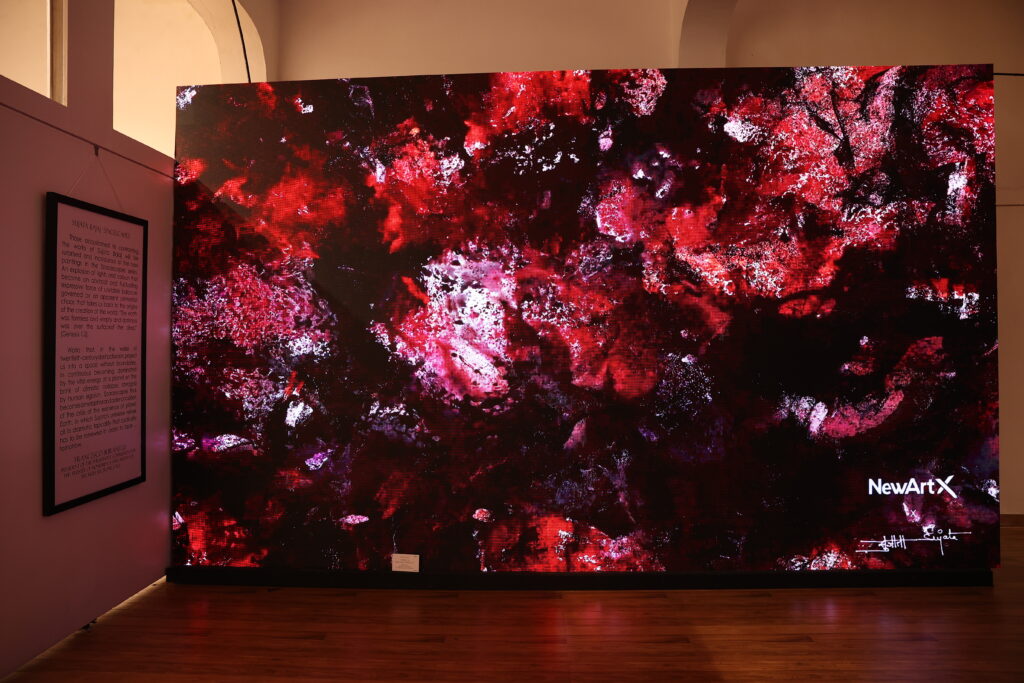
Sujata Bajaj (SB): My artistic vision underwent a significant shift beginning in 2019, triggered by an encounter with a Hubble telescope image of the Andromeda galaxy. This image, initially unidentified, sparked a deep connection and planted the seed for what would become ‘Spacescapes.’ Recognizing the need for new techniques and extensive experimentation, I embarked on a five-year exploration, further fueled by images from the James Webb telescope. These paintings represent the culmination of my discoveries during this period, marking a significant evolution in my approach.
‘Spacescapes’ represents both a continuation and a departure from my previous work. While my core interest in abstraction remains, this project demanded a move towards representing the cosmos, integrating elements of perceived reality derived from scientific imagery. This exploration of deep space has reinforced my belief in the convergence of abstraction and reality. The journey is ongoing, and this body of work reflects a distinct phase of my artistic evolution, driven by the profound inspiration found in the vastness of the universe. This evolution was supported by my husband Rune Jul Larsen, my daughter Helena Bajaj Larsen and friends Laila & Rustom Jehangir.
MS: Knowing Raza’s artistic philosophy and your close connection, how do you imagine he would respond to your current exploration of digital mediums in ‘Spacescapes’?
SB: Given Raza’s artistic philosophy, marked by his humility and unwavering support for experimentation, I believe he would respond to my digital explorations in ‘Spacescapes’ with genuine enthusiasm. He possessed a rare ability to connect with artists at all stages of their careers, offering his time and wisdom generously. This openness, mirrored by Hussain Sir, instilled in me the importance of constant evolution and viewing artistic practice from diverse perspectives.
Raza consistently encouraged pushing boundaries and embracing new approaches. Therefore, I confidently imagine he would be not only pleased but genuinely excited by my foray into digital mediums. He would likely appreciate the spirit of innovation and the attempt to reinterpret the cosmos through contemporary tools. His own commitment to artistic growth would undoubtedly resonate with the experimental nature of ‘Spacescapes.
MS: How did the concept of creating digital works come about for this exhibition?
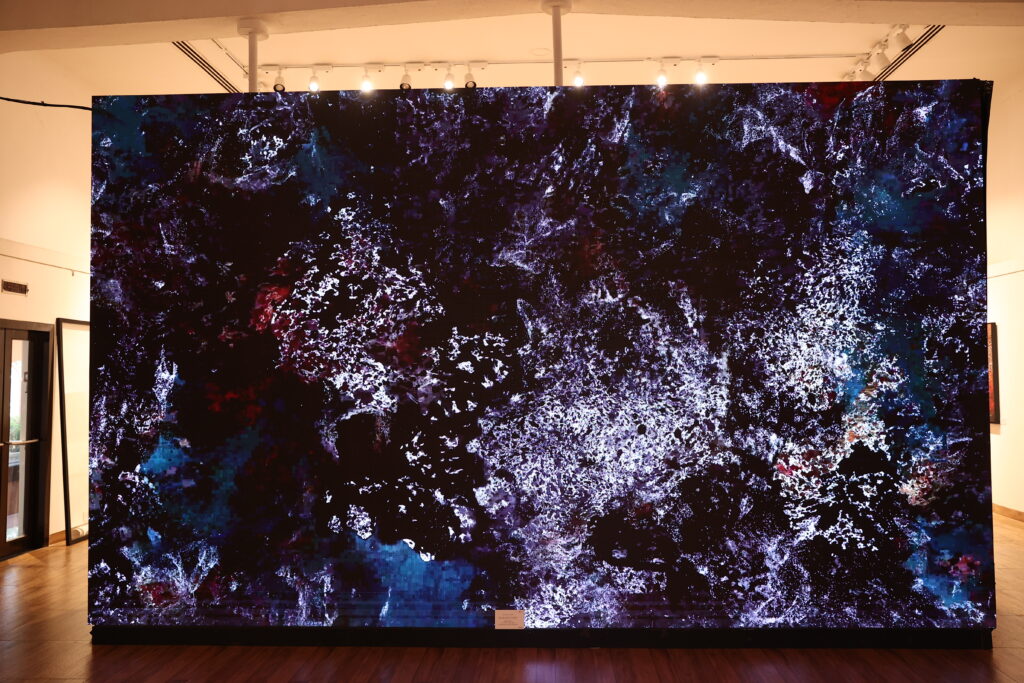
The concept for incorporating digital works into this exhibition stemmed from my exposure to immersive digital art experiences in Paris a couple of years ago. Specifically, witnessing immersive exhibitions of Klimt’s work ignited my interest in this medium. When the opportunity arose to integrate digital elements into ‘Spacescapes,’ I was immediately drawn to the idea. I felt that this particular medium was uniquely suited to convey the vastness and ethereal qualities of this body of work, making it a perfect fit for the exhibition.
MS: How do you believe the digital works in ‘Spacescapes’ effectively communicated your artistic vision to the audience, and what was their response?
SB: The digital works in ‘Spacescapes,’ developed over a year with NewArtX and requiring over 800 hours of conceptualization, effectively extended my artistic vision by offering a more accessible entry point to my conceptual thought. They transcended purely visual engagement, allowing viewers to delve deeper into the ideas behind the paintings. The audience response was overwhelmingly positive. I observed both young and adult visitors spending considerable time interacting with the digital pieces, demonstrating a genuine connection. This level of engagement, this dialogue between the artwork and the viewer, is crucial. It not only serves as a measure of the exhibition’s success but also provides valuable insight into the evolving relationship between art and its audience in the digital age.
MS: How would you characterize the current state of digital media in India compared to its counterparts in the West, and how do you see new galleries and studios spaces like NewArtX contributing to its development?
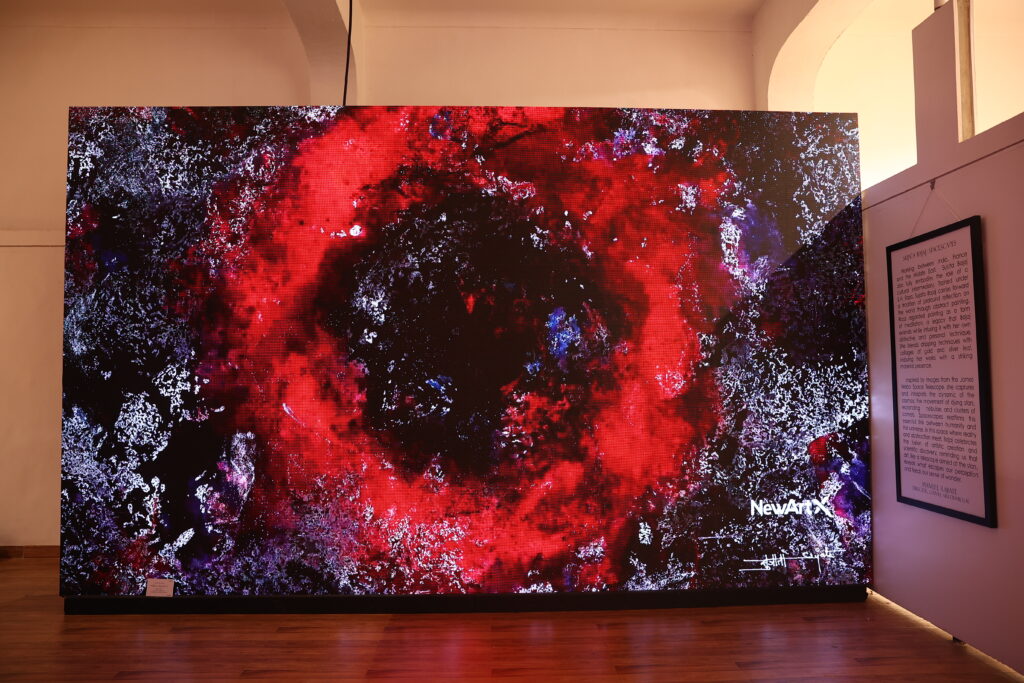
SB: Having experienced the global art scene, I have observed a distinct difference in the development of digital media between the West and India. While digital art has been a subject of exploration in the West for decades, India has historically lacked opportunities for artists to engage with this medium. However, the landscape is changing.
Currently, India is witnessing a burgeoning interest in digital art. Young artists are increasingly adopting it as their primary medium, and art fairs and festivals are actively seeking to showcase digital works. Crucially, spaces like NewArtX are playing a vital role in this development. By actively promoting new media technology, they are providing the necessary platform and resources for artists to experiment and innovate. These galleries and studios are instrumental in fostering a thriving digital art ecosystem in India, bridging the gap with its Western counterparts and accelerating the medium’s growth.
MS: Could you share your experience collaborating with NewArtX for ‘Spacescapes,’ and how did their support contribute to the realization of your digital works?
SB: My journey with the digital works in ‘Spacescapes’ began with an offer of collaboration in Paris. However, upon meeting Saryu and Pulkit, the founders of NewArtX, I decided to partner with them instead. My decision was driven by two key factors. Firstly, their young and pioneering spirit in establishing India’s first gallery and studio dedicated to digital fine arts resonated with me. Secondly, I saw this collaboration as an opportunity to actively contribute to the evolving landscape of Indian visual arts.
Choosing NewArtX was a deliberate act of empowering a new generation of artistic innovators. Their support was instrumental in realizing my digital works. They provided the technical expertise, creative insight, and dedicated studio space necessary to bring my vision to fruition. Their commitment and execution surpassed my expectations, demonstrating their crucial role in advancing digital art in India. I look forward to creating more work with them.
About the artist: A globally acclaimed artist, Sujata Bajaj is renowned for her bold abstractions, dynamic compositions, and innovative use of mixed media. Born in Jaipur, India’s rich traditions shaped her artistic foundation. A French government scholarship in 1988 led her to Paris, where she studied at the École des Beaux-Arts, significantly expanding her artistic language across various mediums. Bajaj’s signature style blends vivid color, layered textures, and symbolic elements, often incorporating sacred texts. Her work has been exhibited worldwide—India, France, the UK, UAE, Norway, Singapore, and the US—earning critical acclaim for its ability to fuse heritage with modernity.

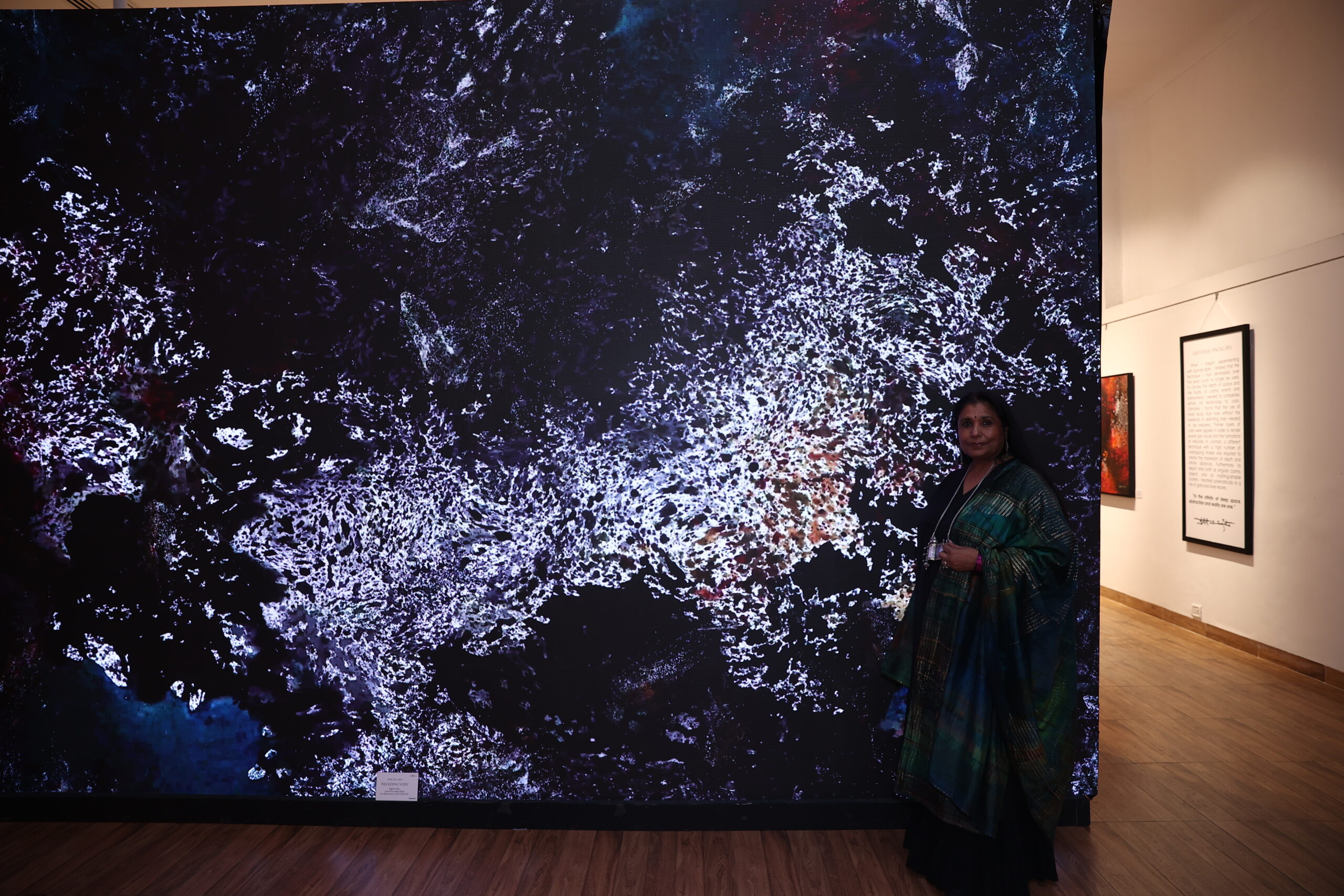

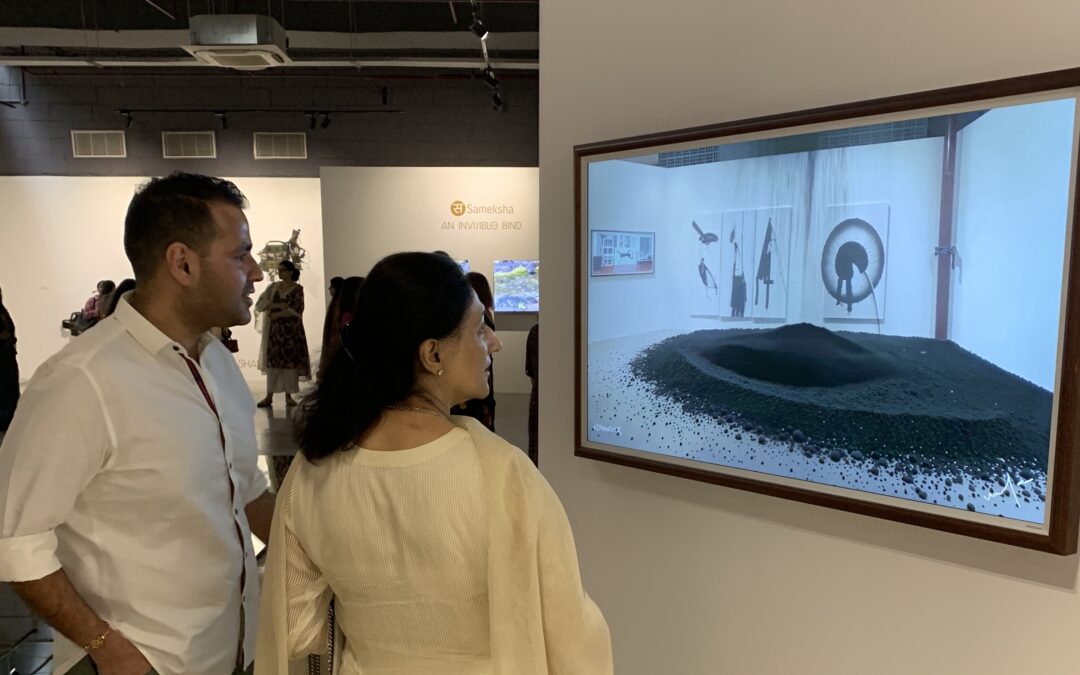
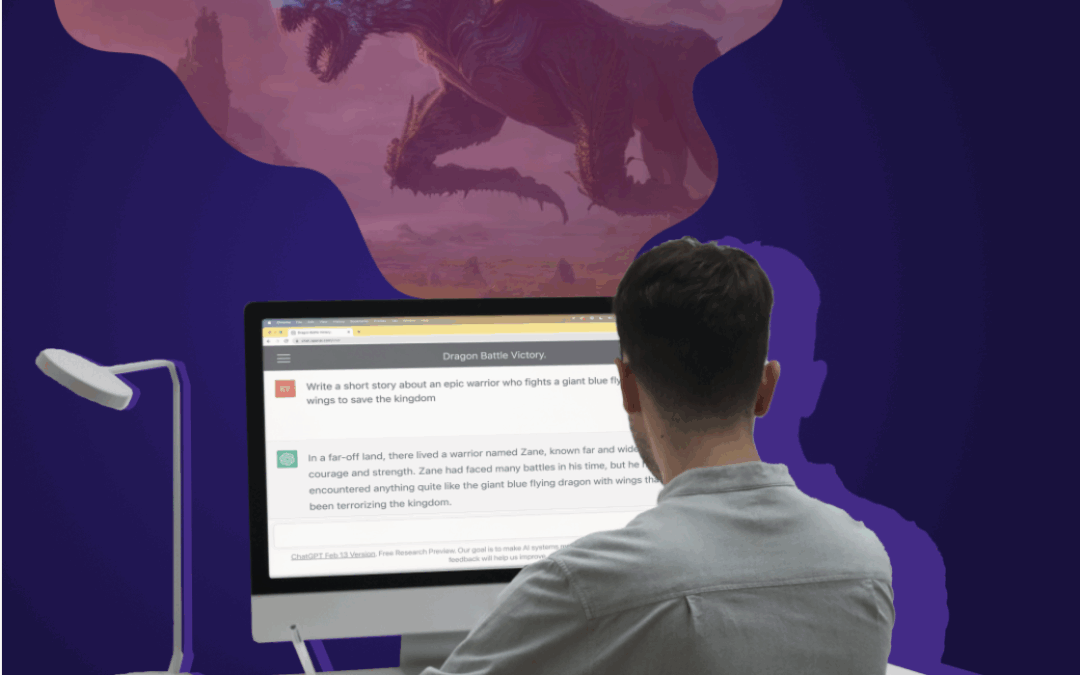
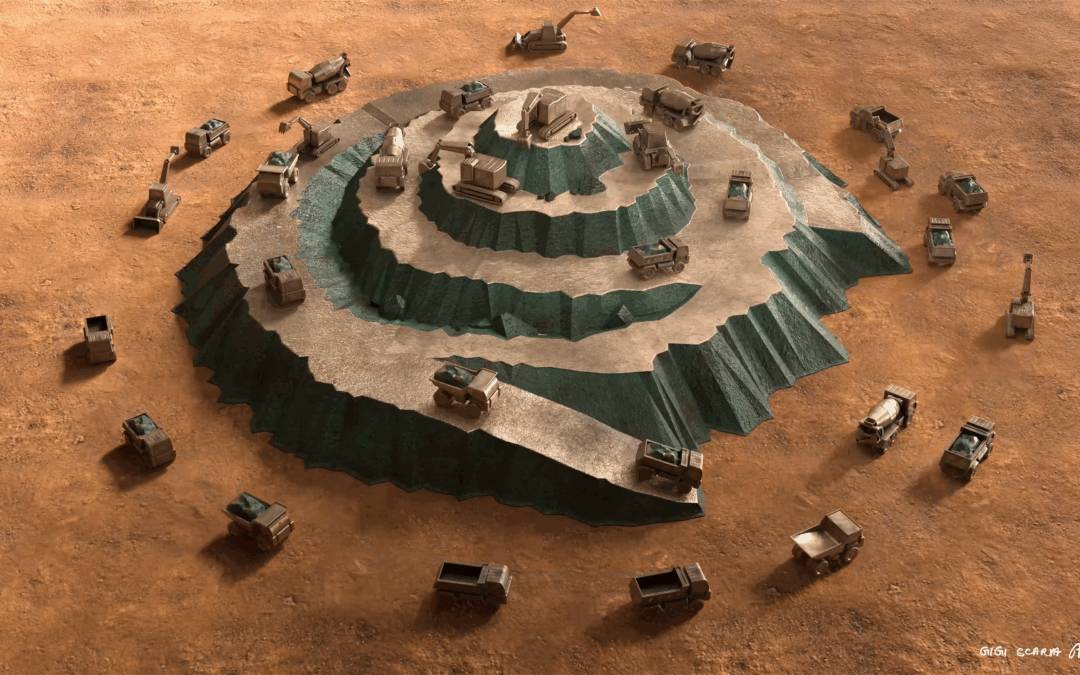
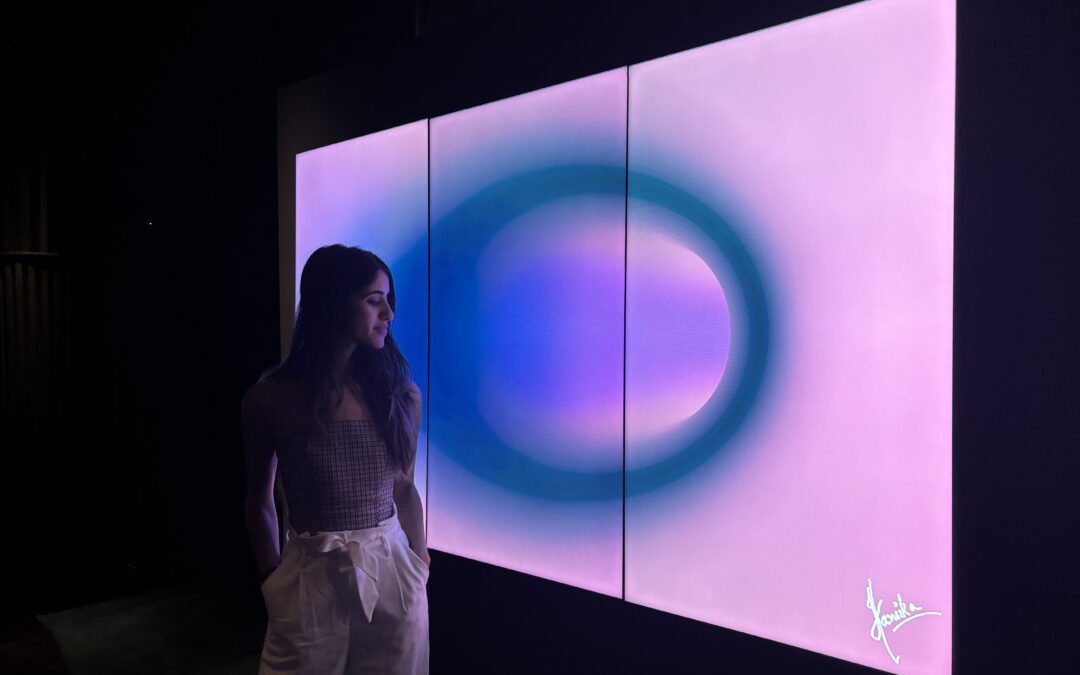
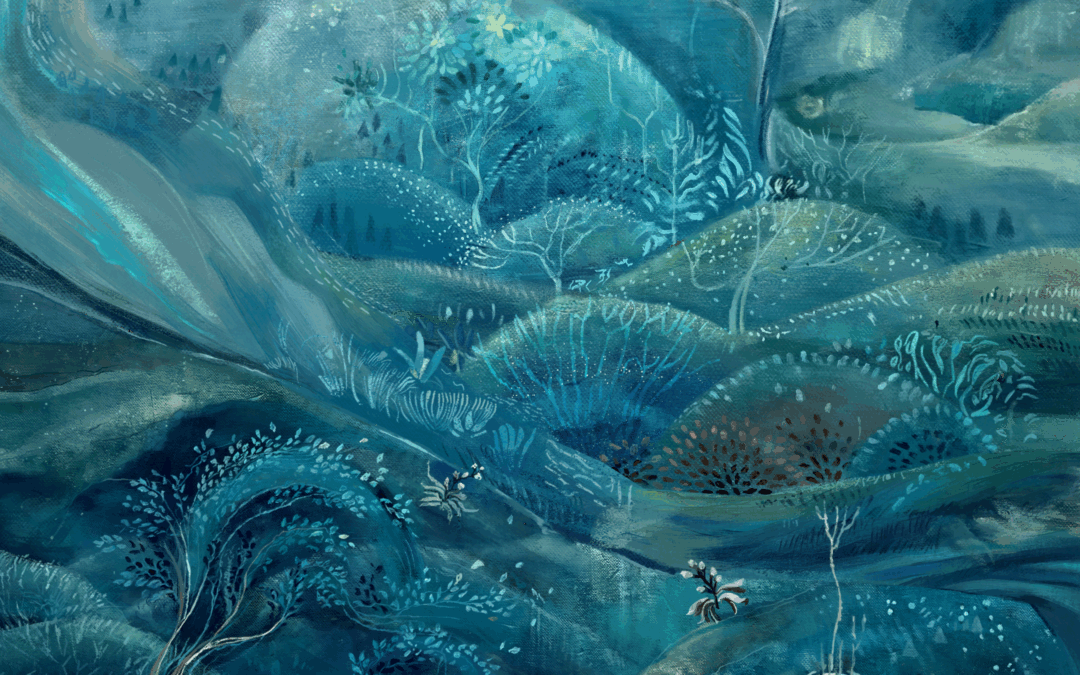
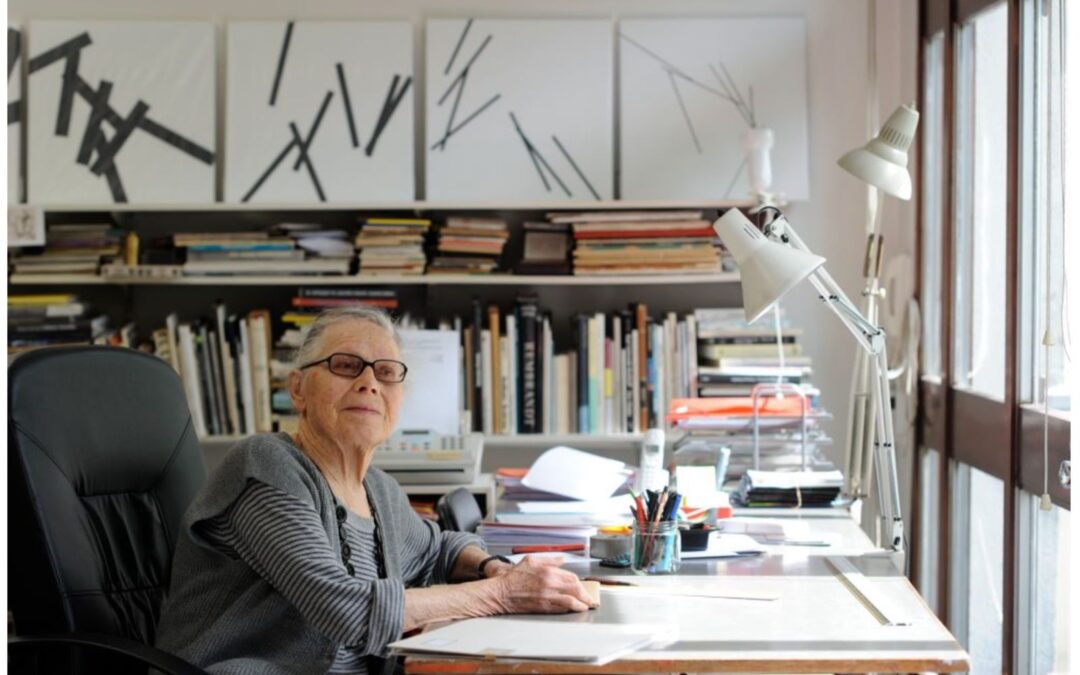
0 Comments